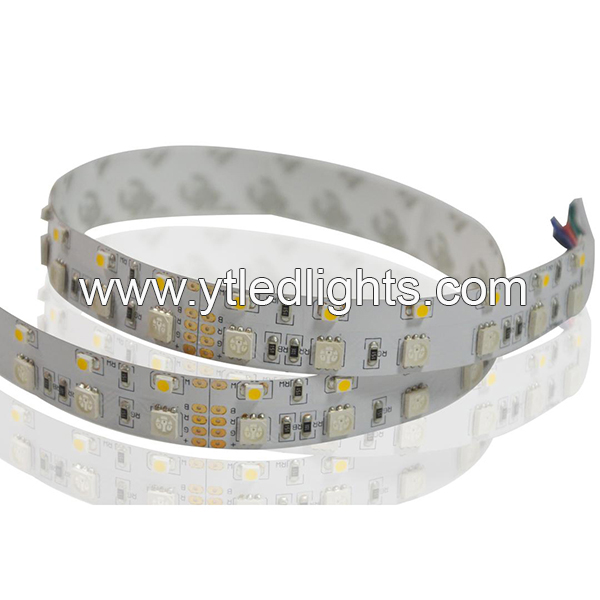
Bendy LED strip light fixtures have become increasingly famous for their versatility, energy efficiency, and ability to transform spaces effortlessly. From tempered lighting in houses to tricky designs in industrial areas, these strips offer countless possibilities. However, how do they paint? In this text, we are able to explore the science behind LED strip lighting, discuss its key additives, and provide an explanation for the differing types, like RGB LED strips and COB LED strips.
Introduction To Bendy LED Strip Lighting
A bendy LED strip mild is a skinny, bendable circuit board embedded with mild-emitting diodes (LEDs). These lighting are quite adaptable, making them appropriate for various packages, consisting of under-cabinet lights, accent lights, or even automotive changes. Their slender layout allows for seamless setup, whether or not on flat surfaces or curved areas.
LED strip lamp are designed to provide high-quality lights while ingesting minimal power. This is why they're a favorite desire for folks who prioritize eco-friendly answers. To absolutely understand how those lighting paintings work, we first need to dive into their basic additives and the concepts that strengthen them.
How LED Strip Lighting Works
At their core, LED strip lights rely upon light-emitting diodes (LEDs). LEDs are semiconductor gadgets that emit mild light while modern electrical signals pass through them. In contrast to conventional bulbs, LEDs no longer depend on heating a filament to provide mild, which makes them far more efficient. Right here's how the important thing additives of a bendy LED strip paintings together:
1. The flexible Circuit Board
The muse of an LED strip mild is its bendy circuit board, normally a product of a cloth-like polyimide or flexible plastic. This cloth lets the strip bend and adapt to unique shapes and surfaces. The circuit board homes the electric connections that hyperlink the LEDs, resistors, and strength supply.
2. LEDs
The LEDs are the number one light supply on the strip. Every LED incorporates a semiconductor chip that emits photons whilst an electric contemporary flows through it. Depending on the layout, the strip can consist of single-color leds or multi-coloration leads, along with the ones utilized in an RGB LED strip.
3. Resistors
Resistors are strategically positioned along the strip to alter the electrical current passing through the LEDs. This guarantees that every LED receives an appropriate amount of present-day, preventing overheating or burnout.
4. Electricity deliver
LED strip lamps perform on low voltage, commonly 12V or 24V. That is why they require a power delivery or transformer to transform trendy family voltage right into a usable level for the strip. Without this conversion, the strip might be damaged or fail to perform effectively.
Know-How RGB LED Strips

RGB LED strips are one of the most famous styles of LED strip lighting, regarded for their capacity to provide a massive style of colors. RGB stands for pink, green, and blue, which may be the three primary colors of mild. Each LED on an RGB strip carries three diodes—one for every color. By varying the intensity of those diodes, the strip can create one-of-a-kind colors together with white.
For instance, when all three diodes are at the highest brightness, the light appears white. If the red diode is most effective, the mild will appear red. RGB LED strips are often managed through far-flung controls or clever systems, permitting users to interchange among colorings, regulate brightness, and even create dynamic light outcomes like fades or flashes.
COB LED Strips: A New Technology Of LED Lighting Fixtures
Even as traditional LED strips use individual LEDs placed at durations along the strip, COB LED strips (Chip-on-Board) constitute a superior era. In COB LED strips, a couple of LED chips are packed intently together on the circuit board, growing a non-stop and uniform light output. This design eliminates the visible "dots" visible in traditional LED strips and affords a smoother, greater, aesthetically attractive light effect.
COB LED strips are best for programs wherein steady lighting fixtures are crucial, which include backlighting presentations or illuminating workspaces. In addition, they provide better heat dissipation and advanced performance than older designs.
Benefits Of Bendy LED Strip Lighting
The technological know-how behind bendy LED strip lighting no longer merely explains how they paint but also highlights the benefits they carry. Here are a few key benefits:
1. Energy efficiency
LEDs convert more electricity into light and less into warmness, making them a long way more efficient than conventional light alternatives. This is particularly useful when using LED strip lamps for lengthy intervals.
2. Customization
Flexible LED strips may be cut to length and formed to fit nearly any floor. Whether you are installing an RGB LED strip underneath kitchen cabinets or a COB LED strip for a sleek, present-day look, customization is handy.
3. Long Lifespan
LEDs have an excellent lifespan, often lasting as much as 50,000 hours or more. This makes them a value-powerful preference for each residential and industrial program.
4. Versatility
From creating ambient lighting fixtures in a bedroom to highlighting architectural capabilities in a commercial space, LED strip lights offer unequaled versatility. Their potential to conform to various applications is a chief motive for his or her popularity.
Applications Of LED Strip Lighting Fixtures
Flexible LED strip lighting fixtures have a huge range of packages, way to their precise features:
• Domestic Décor: set up LED strip lamps under cabinets, along stairs, or in the back of televisions for a contemporary touch.
• Out-of-door lights: Weatherproof strips can light up patios, gardens, or pathways.
• Commercial Use: businesses use LED strips to create eye-catching, showing or highlighting architectural information.
• Car: RGB LED strips are often used to decorate automobile interiors or as accent lighting fixtures for exteriors.
Conclusion
Flexible LED strip lights have revolutionized the lights industry, supplying an aggregate of performance, versatility, and aesthetic enchantment. By means of knowledge of the science at the back of these lights, we will admire the technology that powers their functionality. Whether you're using an RGB LED strip to feature vibrant colors in a space or a COB LED strip for easy, professional lighting, the possibilities are endless.
As the generation continues to increase, LED strip lamps will likely become even more green and innovative, establishing new doors for creativity and sustainability. Whether or not you're improving your own home or creating a dynamic commercial design, those lights remain a sensible and elegant solution for present-day lighting fixtures.








